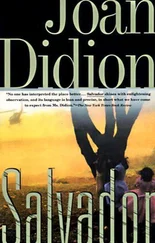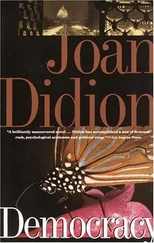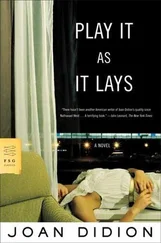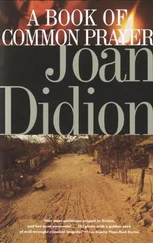Joan Didion - Vintage Didion
Здесь есть возможность читать онлайн «Joan Didion - Vintage Didion» весь текст электронной книги совершенно бесплатно (целиком полную версию без сокращений). В некоторых случаях можно слушать аудио, скачать через торрент в формате fb2 и присутствует краткое содержание. Год выпуска: 2004, Издательство: Vintage Books, Жанр: Биографии и Мемуары, Публицистика, на английском языке. Описание произведения, (предисловие) а так же отзывы посетителей доступны на портале библиотеки ЛибКат.
- Название:Vintage Didion
- Автор:
- Издательство:Vintage Books
- Жанр:
- Год:2004
- ISBN:нет данных
- Рейтинг книги:4 / 5. Голосов: 1
-
Избранное:Добавить в избранное
- Отзывы:
-
Ваша оценка:
- 80
- 1
- 2
- 3
- 4
- 5
Vintage Didion: краткое содержание, описание и аннотация
Предлагаем к чтению аннотацию, описание, краткое содержание или предисловие (зависит от того, что написал сам автор книги «Vintage Didion»). Если вы не нашли необходимую информацию о книге — напишите в комментариях, мы постараемся отыскать её.
Vintage Didion — читать онлайн бесплатно полную книгу (весь текст) целиком
Ниже представлен текст книги, разбитый по страницам. Система сохранения места последней прочитанной страницы, позволяет с удобством читать онлайн бесплатно книгу «Vintage Didion», без необходимости каждый раз заново искать на чём Вы остановились. Поставьте закладку, и сможете в любой момент перейти на страницу, на которой закончили чтение.
Интервал:
Закладка:
There were in the story told by Jesus Garcia and in the story told by Steven Carr certain details that appeared to coincide. Both Jesus Garcia and Steven Carr mentioned the Howard Johnson’s near the Miami airport, which happened also to be the Howard Johnson’s with the seventeen-dollar-a-night “guerrilla discount.” Both Jesus Garcia and Steven Carr mentioned meetings in Miami with an American named Bruce Jones, who was said to own a farm on the border between Costa Rica and Nicaragua. Both Jesus Garcia and Steven Carr mentioned Thomas Posey, the Alabama produce wholesaler who had founded the paramilitary group CMA, or Civilian Materiel Assistance, formerly Civilian Military Assistance. Both Jesus Garcia and Steven Carr mentioned Robert Owen, the young Stanford graduate who had gone to Washington to work on the staff of Senator Dan Quayle (R-Ind.), had then moved into public relations, at Gray and Company, had in January of 1985 founded the nonprofit Institute for Democracy, Education, and Assistance, or IDEA (which was by the fall of 1985 on a consultancy contract to the State Department’s Nicaraguan Humanitarian Assistance Office), and had been, it was later revealed, carrying cash to and from Central America for Oliver North.
This was, as described, a small world, and one in which encounters seemed at once random and fated, as in the waking dream that was Miami itself. People in this world spoke of having “tripped into an organization.” People saw freedom fighters on “Nightline,” and then in Miami. People saw boxes in motel rooms, and concluded that the boxes contained C-4. People received telephone calls from strangers, and picked them up at the airport at three in the morning, and began looking for a private plane to fly to Central America. Some people just turned up out of the nowhere: Jesus Garcia happened to meet Thomas Posey because he was working the afternoon shift at the Dade County jail on the day Thomas Posey was booked for trying to take a.380 automatic pistol through the X-ray machine on Concourse G at the Miami airport. Some people turned up not exactly out of the nowhere but all over the map: Jesus Garcia said that he had seen Robert Owen in Miami, more specifically, as an assistant U.S. attorney in Miami put it, “at that Howard Johnson’s when they were planning that stuff,” by which the assistant U.S. attorney meant weapons flights. Steven Carr said that he had seen Robert Owen in Costa Rica, witnessing a weapons delivery at the base near the Nicaraguan border. Robert Owen, when he eventually appeared before the select committees, acknowledged that he had been present when such a delivery was made, but said that he never saw the actual unloading, and that his presence on the scene was, as the Miami Herald put it, “merely coincidental”: another random but fated encounter.
There were no particularly novel elements in either the story told by Jesus Garcia or the story told by Steven Carr. They were Miami stories, fragments of the underwater narrative, and as such they were of a genre familiar in this country since at least the Bay of Pigs. Such stories had often been, like these, intrinsically impossible to corroborate. Such stories had often been of doubtful provenance, had been either leaked by prosecutors unable to make a case or elicited, like these, in jailhouse interviews, a circumstance that has traditionally tended, like a DEATH BEFORE DISHONOR tattoo, to work against the credibility of the teller. Any single Miami story, moreover, was hard to follow, and typically required a more extensive recall of other Miami stories than most people outside Miami could offer. Characters would frequently reappear. A convicted bomber named Hector Cornillot, a onetime member of Orlando Bosch’s Cuban Power movement, turned out, for example, to have been during the spring of 1985 the night bookkeeper at the Howard Johnson’s near the Miami airport. Motivation, often opaque in a first or second appearance, might come clear only in a third, or a tenth.
Miami stories were low, and lurid, and so radically reliant on the inductive leap that they tended to attract advocates of an ideological or paranoid bent, which was another reason they remained, for many people, easy to dismiss. Stories like these had been told to the Warren Commission in 1964, but many people had preferred to discuss what was then called the climate of violence, and the healing process. Stories like these had been told during the Watergate investigations in 1974, but the president had resigned, enabling the healing process, it was again said, to begin. Stories like these had been told to the Church committee in 1975 and 1976, and to the House Select Committee on Assassinations in 1977 and 1978, but many people had preferred to focus instead on the constitutional questions raised, not on the hypodermic syringe containing Black Leaf 40 with which the CIA was trying in November of 1963 to get Fidel Castro assassinated, not on Johnny Roselli in the oil drum in Biscayne Bay, not on that motel room in Dallas where Marita Lorenz claimed she had seen the rifles and the scopes and Frank Sturgis and Orlando Bosch and Jack Ruby and the Novo brothers, but on the separation of powers, and the proper role of congressional oversight. “The search for conspiracy,” Anthony Lewis had written in The New York Times in September of 1975, “only increases the elements of morbidity and paranoia and fantasy in this country. It romanticizes crimes that are terrible because of their lack of purpose. It obscures our necessary understanding, all of us, that in this life there is often tragedy without reason.” This was not at the time an uncommon note, nor was it later. Particularly in Washington, where the logical consequences of any administration’s imperial yearnings were thought to be voided when the voting levers were next pulled, the study of the underwater narrative, these stories about what people in Miami may or may not have done on the basis of what people in Washington had or had not said, was believed to serve no useful purpose. That the assassination of John F. Kennedy might or might not have been the specific consequence of his administration’s own incursions into the tropic of morbidity and paranoia and fantasy (as early as 1964, two staff attorneys for the Warren Commission, W David Slawson and William Coleman, had prepared a memorandum urging the commission to investigate the possibility that Lee Harvey Oswald had been acting for, or had been set up by, anti-Castro Cuban exiles) did not recommend, in this view, a closer study of the tropic. That there might or might not be, in the wreckage of the Reagan administration, certain consequences to that administration’s similar incursions recommended only, in this view, that it was again time to focus on the mechanical model, time to talk about runaway agencies, arrogance in the executive branch, about constitutional crises and the nature of the presidency about faults in the structure, flaws in the process; time to talk, above all, about 1988, when the levers would again be pulled and the consequences voided and any lingering morbidity dispelled by the enthusiasms, the energies, of the new team. “Dick Goodwin was handling Latin America and a dozen other problems,” Arthur M. Schlesinger, Jr., once told us about the early months of the Kennedy administration, as suggestive a sentence as has perhaps been written about this tabula rasa effect in Washington life.
In the late summer of 1985, some months after the Outreach meeting in Room 450 of the Old Executive Office Building in Washington at which I had heard Jack Wheeler talk about the necessity for supporting freedom fighters around the world, I happened to receive a letter (“Dear Fellow American”) from Major General John K. Singlaub, an invitation to the International Freedom Fighters Dinner to be held that September in the Crystal Ballroom of the Registry Hotel in Dallas. This letter was dated August 7, 1985, a date on which Steven Carr was already sitting in La Reforma prison in San José and on which Jesus Garcia was one day short of receiving a call from a twenty-nine-year-old stranger who identified himself as Allen Saum, who said that he was a major in the U.S. Marines and had been sent by the White House, who enlisted Jesus Garcia in a mission he described as “George Bush’s baby,” and who then telephoned the Miami office of the FBI and told them where they could pick up Jesus Garcia and his MAC-10. “He looked typical Ivy League, I thought he must be CIA,” Jesus Garcia later said about “Allen Saum,” who did not show up for Jesus Garcia’s trial but did appear at a pretrial hearing, where he said that he took orders from a man he knew only as “Sam.”
Читать дальшеИнтервал:
Закладка:
Похожие книги на «Vintage Didion»
Представляем Вашему вниманию похожие книги на «Vintage Didion» списком для выбора. Мы отобрали схожую по названию и смыслу литературу в надежде предоставить читателям больше вариантов отыскать новые, интересные, ещё непрочитанные произведения.
Обсуждение, отзывы о книге «Vintage Didion» и просто собственные мнения читателей. Оставьте ваши комментарии, напишите, что Вы думаете о произведении, его смысле или главных героях. Укажите что конкретно понравилось, а что нет, и почему Вы так считаете.












